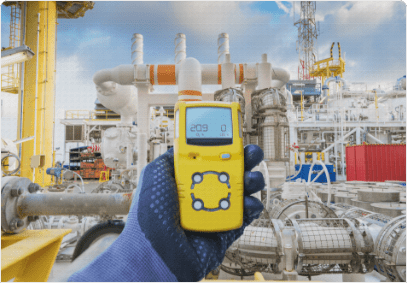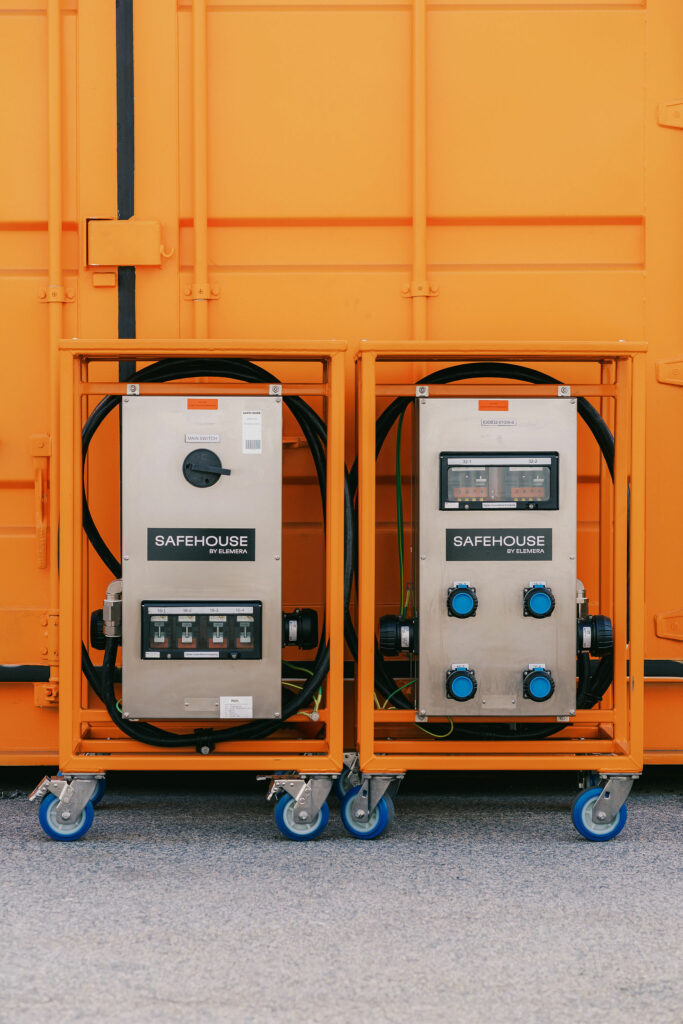7 Easy Facts About Roar Solutions Described
7 Easy Facts About Roar Solutions Described
Blog Article
Examine This Report about Roar Solutions
Table of ContentsUnknown Facts About Roar SolutionsAn Unbiased View of Roar SolutionsRoar Solutions Fundamentals Explained
In order to shield installments from a prospective explosion a method of evaluating and categorizing a potentially harmful location is called for. The objective of this is to make certain the appropriate option and installation of equipment to inevitably stop an explosion and to make sure security of life.
(https://hub.docker.com/u/roarsolutions?_gl=1*1e9kzbw*_ga*ODg4MTc2NDIuMTczMzIyNDYzMg..*_ga_XJWPQMJYHQ*MTczMzIyNDYzMS4xLjEuMTczMzIyNDg4MS4yOS4wLjA.)
No tools must be set up where the surface area temperature level of the devices is above the ignition temperature of the offered risk. Below are some typical dust harmful and their minimum ignition temperature. Coal Dirt 380C 225C Polythene 420C (melts) Methyl Cellulose 420C 320C Starch 460C 435C Flour 490C 340C Sugar 490C 460C Grain Dust 510C 300C Phenolic Resin 530C > 450C Aluminium 590C > 450C PVC 700C > 450C Soot 810C 570C The likelihood of the risk being existing in a concentration high enough to create an ignition will differ from location to area.
In order to classify this risk an installation is separated into locations of danger depending upon the amount of time the unsafe exists. These locations are referred to as Zones. For gases and vapours and dirts and fibers there are three areas. Area 0 Area 20 A harmful ambience is extremely likely to be existing and might be present for extended periods of time (> 1000 hours each year) and even continuously Zone 1 Area 21 A hazardous environment is possible yet unlikely to be present for long periods of time (> 10 450 C [842 F] A category of T6 implies the minimal ignition temperature level is > 85 C [185 F] Hazardous area electric tools perhaps created for usage in greater ambient temperature levels. This would suggested on the rating plate e.g. EExe II C T3 Ta + 60C( This implies at 60C ambient T3 will certainly not be gone beyond) T1 T1, T2, T3, T4, T5, T6 T2 T2, T3, T4, T5, T6 T3 T3, T4, T5, T6 T4 T4, T5, T6 T5 T5, T6 T6 T6 A T Class score of T1 suggests the maximum surface temperature created by the instrument at 40 C is 450 C. Assuming the associated T Course and Temperature rating for the equipment are appropriate for the area, you can always use an instrument with an extra rigid Division ranking than required for the location. There isn't a clear answer to this inquiry regrettably. It actually does depend upon the kind of equipment and what repair work need to be performed. Tools with certain examination treatments that can not be performed in the field in order to achieve/maintain 3rd party score. Have to come back to the factory if it is before the equipment's service. Field Repair By Authorised Employee: Challenging testing may not be required nonetheless particular treatments may need to be adhered to in order for the devices to keep its 3rd party rating. Authorized personnel must be utilized to perform the job correctly Repair service need to be a like for like replacement. New part have to be thought about as a direct replacement needing no special screening of the tools after the fixing is full. Each tool with a harmful ranking need to be examined independently. These are outlined at a high level below, however, for even more detailed info, please refer directly to the standards.
The 9-Second Trick For Roar Solutions
The equipment register is an extensive database of equipment records that includes a minimum collection of fields to determine each thing's location, technological criteria, Ex classification, age, and ecological information. This info is vital for monitoring and managing the equipment properly within hazardous locations. In contrast, for periodic or RBI tasting evaluations, the grade will certainly be a mix of Comprehensive and Close examinations. The ratio of In-depth to Close assessments will be identified by the Equipment Danger, which is analyzed based upon ignition threat (the probability of a resource of ignition versus the likelihood of a flammable ambience )and the dangerous location classification
( Zone 0, 1, or 2). This variant will likewise affect the resourcing demands for work prep work. When Great deals are specified, you can establish sampling strategies based upon the example size of each Whole lot, which describes the variety of arbitrary tools products to be inspected. To establish the needed sample size, two elements require to be assessed: the dimension of the Great deal and the category of inspection, which suggests the degree of effort that should be applied( decreased, normal, or enhanced )to the assessment of the Whole lot. By combining the category of assessment with the Great deal dimension, you can after that develop the proper being rejected criteria for a sample, implying the permitted number of malfunctioning items discovered within that example. For even more information on this procedure, please describe the Power Institute Standards. The IEC 60079 standard recommends that the maximum interval between inspections must not go beyond 3 years. EEHA examinations will additionally be conducted outside of RBI campaigns as component of scheduled upkeep and tools overhauls or repairs. These examinations can be credited toward the RBI sample dimensions within the influenced Great deals. EEHA examinations are conducted to identify faults in electrical equipment. A heavy racking up system is necessary, as a solitary item of equipment may have multiple faults, each with varying degrees of ignition risk. If the consolidated rating of both assessments is much less than two times the mistake score, the Lot is considered appropriate. If the Lot is still thought about inappropriate, it should undergo a see this site full inspection or reason, which may set off stricter inspection procedures. Accepted Lot: The root causes of any kind of mistakes are identified. If a common failing mode is found, additional equipment might call for maintenance. Mistakes are identified by seriousness( Safety, Integrity, House cleaning ), guaranteeing that immediate problems are analyzed and attended to quickly to alleviate any type of effect on safety or operations. The EEHA data source should track and record the lifecycle of mistakes together with the restorative actions taken. Executing a durable Risk-Based Inspection( RBI )technique is critical for ensuring compliance and safety and security in handling Electrical Devices in Hazardous Areas( EEHA) (eeha). Automated Mistake Rating and Lifecycle Administration: Easily take care of mistakes and track their lifecycle to enhance evaluation accuracy. The introduction of this support for risk-based assessment better strengthens Inspectivity's position as a best-in-class solution for regulative compliance, along with for any asset-centric examination use instance. If you are interested in discovering more, we welcome you to ask for a demo and find exactly how our option can transform your EEHA management processes.
Roar Solutions Things To Know Before You Buy

In regards to explosive danger, an unsafe location is an atmosphere in which an eruptive atmosphere exists (or may be anticipated to be existing) in quantities that require special preventative measures for the construction, installation and use devices. hazardous area course. In this write-up we discover the challenges faced in the office, the risk control steps, and the called for competencies to function securely
It issues of modern life that we make, store or manage a series of gases or liquids that are considered combustible, and a variety of dirts that are considered flammable. These substances can, in certain problems, form eruptive environments and these can have major and heartbreaking effects. The majority of us recognize with the fire triangle eliminate any type of among the 3 elements and the fire can not occur, however what does this mean in the context of hazardous areas? When breaking this down into its simplest terms it is essentially: a combination of a particular amount of release or leakage of a specific substance or product, blending with ambient oxygen, and the visibility of a resource of ignition.
In a lot of circumstances, we can do little about the degrees of oxygen airborne, but we can have substantial impact on sources of ignition, for instance electric tools. Hazardous areas are recorded on the dangerous location category illustration and are determined on-site by the triangular "EX LOVER" indication. Here, among various other vital info, areas are split into 3 kinds relying on the hazard, the chance and duration that an eruptive environment will exist; Area 0 or 20 is regarded one of the most unsafe and Zone 2 or 22 is regarded the least.
Report this page